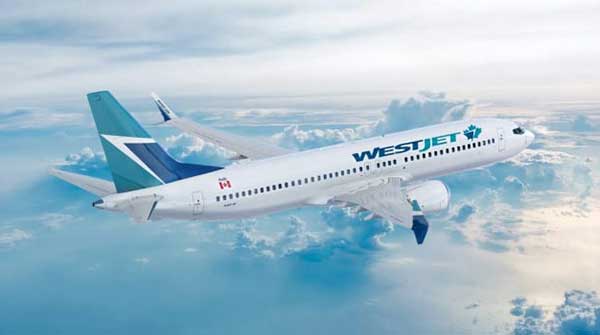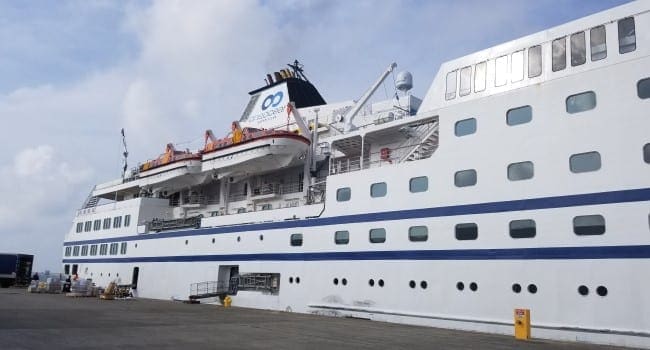 It happens all too often – travel companies suddenly announce bankruptcy or face financial hurdles, leaving thousands of paying customers stranded and out of pocket for hasty alternate arrangements.
It happens all too often – travel companies suddenly announce bankruptcy or face financial hurdles, leaving thousands of paying customers stranded and out of pocket for hasty alternate arrangements.
Never mind the disappointment of missing out on a trip of a lifetime – the money can be gone, too. The sudden shutdown of British travel operator Thomas Cook is a massive example, leaving 600,000 travellers last September high and dry around the world.
Reuters reported that 2019 was a big year for airline bankruptcies globally.
And it’s not just airlines, as we have seen with the up-in-the-air status of One Ocean Expeditions, based in Squamish, B.C. The small ship cruise adventure company, which specializes in Arctic and Antarctica expeditions, is facing financial and logistical struggles with its leased ships. It has cancelled trips with little notice, leaving guests who’ve paid tens of thousands of dollars in the lurch. (According to a recent Postmedia story, the CEO is seeking a buyer so the company can keep some of its commitments to guests. The story says some customers have received refunds for cancelled trips but many have not.)
If you’re one of the unlucky travellers caught in such a scenario, can you at least get your money back?
It depends on the type of insurance you have and how you booked your trip, says Dan Keon of travel insurance provider Allianz Global Assistance.
Insurance is meant to protect against the unexpected, says Keon. “If you purchase a trip without insurance, you’re likely out of luck.” In fact, insurance company Kanetix states that two-thirds of Canadians don’t buy cancellation insurance or are unaware if they even have it.
Cancellation insurance is the best choice, says Keon, and it should be bought through a licensed travel agent, broker or bank. Some credit cards will offer protection if you purchase the trip using that card. Cancellation insurance can provide protection in case you cancel for a number of reasons. That can include everything from being selected for jury duty to an unexpected illness. Keon says there can be 10 to 20 reasons to cancel a trip, and it can include the travel company’s bankruptcy. “But it’s never good to assume if bankruptcy is covered. These types of nuances are good to understand,” Keon says.
Most insurance companies will give clients a free look period, usually around 10 days, allowing them to review the fine print and ask questions.
Yes, you will pay more for cancellation insurance – often it’s a daily rate per traveller – and there may also be a cutoff date, such as six or seven days before the trip, to qualify. And you may only collect 75 to 80 per cent of the loss. But it’s better than taking the chance of being 100 per cent out of pocket.
(Lisa Monforton was hosted by OOE on two excellent trips over the past four years.)

Canada’s two largest air carriers, WestJet and Air Canada, allow no changes on their lowest fare tickets. Photo: WestJet
Standard or economy airfares: Do you know the difference?
The cheapest airfare isn’t always a great deal. I learned that after I recently bought a couple of plane tickets from Calgary to Ontario for a family holiday visit. Christmas airfares are so expensive, I try to travel off-peak days and find the rock-bottom price. I chose the Basic Economy fare, about $50 more costly than the next tier, Economy.
When I decided to change my flight to leave a few days earlier, I was in for a nasty surprise (hidden in the fine print). I was told, “Sorry, that’s not possible with this type of fare.”
Both WestJet and Air Canada in 2019 decided to follow the practice of U.S. carriers with a new type of fare that essentially just gets you a seat on the plane. There’s no option to upgrade, change flying dates or get a refund. With Economy, you can pay a fee to change your flight.
Next time, I’ll consider spending a little extra for more flexibility.

This is a concept drawing of the new Panama Canal visitor centre designed by FORREC. Photo: FORREC
How the selfie generation is altering travel experiences
It’s no secret that social media influences where and how we travel – cue those dreamy Instagram photos of tree houses in Norway. Makes you want book a flight now, right?
But did you know that some global attractions are being designed explicitly to cater to a new generation of travellers with high expectations? They offer features like more space to use selfie sticks or creating attractions that put people smack in the middle of an immersive scenario.
When it comes to the world of designing attractions and travel experiences, Matt Dawson, vice-president of business development at FORREC, an entertainment design company, says it’s all about creating a space where people can feel like they’re having a transformative moment. Dawson says bucket-list travellers have high expectations for visually stunning experiences.
“We’re living in a world where everything is visually beautiful, the experiences have to keep up with that,” he says, pointing to one of FORREC’s projects in Korea, called Everland, where Aesop’s fables spring to life.
Another example is the company’s project to overhaul the Panama Canal visitor centre, which sees 10,000 people a day pass through. Dawson says the project is taking into account the flow and space required for that many visitors.
“People walk around with selfie sticks, so they take up more space; we actually take that into account, too,” says Dawson.
People can watch the ships pass through three of the canal’s locks from a viewing platform, but the new experience will be vastly different. “People are looking for a bespoke experience. All the major brands are creating authentic experiences because there is a trend that people want one of a kind.”
Visitors at the renewed centre will feel as if they’re ‘in’ the experience, Dawson says. There will be digital backdrops where they can turn the camera around and feel like they’re under water and under the ship. “We are designing it with Instagram in mind.”
Another FORREC project is in Hangzhou, China, a large city whose massive wetland is typically only visited during the day. Dawson says FORREC is re-imagining a 10-acre area in the park that’s filled with lakes, ponds and swamps. The company is adding special lighting and audio/visuals to create a surreal landscape in the middle of the city.
“Our goal is to make it feel more transformative, so they’re involved in the stories or something they’ve never done before,” he says.
Travel Like This editor Lisa Monforton is an award-winning Calgary-based travel writer. Follow @lisamonforton on Instagram and Twitter.
BECOME A TRAVEL LIKE THIS CONTRIBUTOR. Contact us for details.
The views, opinions and positions expressed by columnists and contributors are the author’s alone. They do not inherently or expressly reflect the views, opinions and/or positions of our publication.

